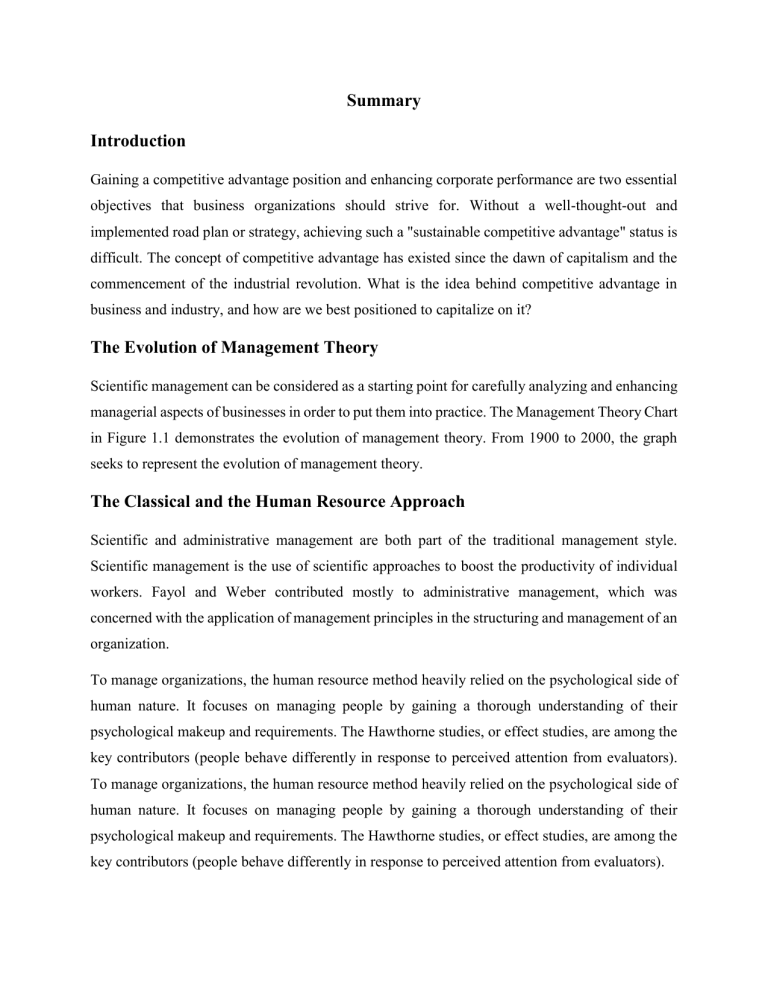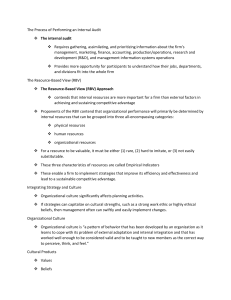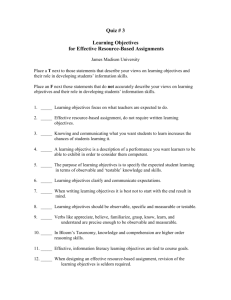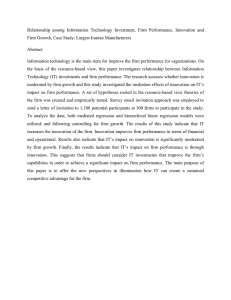
Summary Introduction Gaining a competitive advantage position and enhancing corporate performance are two essential objectives that business organizations should strive for. Without a well-thought-out and implemented road plan or strategy, achieving such a "sustainable competitive advantage" status is difficult. The concept of competitive advantage has existed since the dawn of capitalism and the commencement of the industrial revolution. What is the idea behind competitive advantage in business and industry, and how are we best positioned to capitalize on it? The Evolution of Management Theory Scientific management can be considered as a starting point for carefully analyzing and enhancing managerial aspects of businesses in order to put them into practice. The Management Theory Chart in Figure 1.1 demonstrates the evolution of management theory. From 1900 to 2000, the graph seeks to represent the evolution of management theory. The Classical and the Human Resource Approach Scientific and administrative management are both part of the traditional management style. Scientific management is the use of scientific approaches to boost the productivity of individual workers. Fayol and Weber contributed mostly to administrative management, which was concerned with the application of management principles in the structuring and management of an organization. To manage organizations, the human resource method heavily relied on the psychological side of human nature. It focuses on managing people by gaining a thorough understanding of their psychological makeup and requirements. The Hawthorne studies, or effect studies, are among the key contributors (people behave differently in response to perceived attention from evaluators). To manage organizations, the human resource method heavily relied on the psychological side of human nature. It focuses on managing people by gaining a thorough understanding of their psychological makeup and requirements. The Hawthorne studies, or effect studies, are among the key contributors (people behave differently in response to perceived attention from evaluators). The Quantitative Approach and the Contingency Approach This is a management strategy that emphasizes the use of a set of decision-making tools based on the scientific method. Statistics, linear programming, decision trees, and network analysis are examples of these. Inventory control and quality control are two examples of managerial uses. This is a management perspective that emphasizes that there is no single optimum technique to manage people or work in every situation. Before making judgments, it urges managers to consider individual and circumstance differences. This is owing to the fact that different environmental and organizational needs and structures have an impact on a company. The Information Technology Approach The evolution of management thought and practice is depicted in the management theory chart. It depicts how those important approaches interact with those relevant management theories. The chart is dynamic in nature, meaning that while the approaches and/or ideas are connected, they are not identical. The interaction and interlinking of management theories is represented as progressive in nature (shown by straight-line arrows) and goes beyond chronological sequence. Environmental needs and the relativity of structural and operational constraints relevant to organizational conduct and practices impact the link between theory and practice. Strategic Management Theory Overview The process and technique of defining an organization's objectives, implementing policies and plans to pursue and attain these objectives, and allocating resources is known as strategic management. Profit-maximizing and competition-based theories, resource-based theories, agency theories, and contingency theories are examples of common strategic management theories that have been noticed and applied. The survival-based approach is founded on the premise that in order to survive, businesses must constantly adapt to their competitive environment. This study will concentrate on the organization's internal qualities (i.e. resources, capabilities, and systems) in order to achieve competitive advantage. The Resource-Based View Much of the literature on strategic management revolves around the quest of competitive advantage. When a company implements a value-creating strategy that is not being applied by any existing or potential competitors, it is considered to have a competitive edge. Value, inimitability, and non-substitutability are four empirical measures of a firm's ability to build sustainable competitive advantage. Ma (2000) offers three observations on competitive advantage and conceptually investigates the various patterns of competitive advantage and firm performance. Competitive advantage, according to Ma, does not imply higher performance. This article proposes an integrative paradigm for analyzing the nature and causes of competitive advantage for managers. Ma (1999a) proposes the SELECT framework as an integrative framework to aid generalization. It has been proposed that understanding the causes of competitive advantage can assist a company in gaining and maintaining a competitive edge. The corporation can better leverage competitive advantage by studying its substance, expression, location, and effect. In recent years, the resource-based view of the enterprise has become a popular paradigm of competitive advantage. The RBV stresses strategic decision, task eding the firm's management with finding, developing, and deploying critical resources in order to optimize profits. The word was coined by Wernerfelt in 1984. Fahy (Fahy, 2000) A alternative to the I/O perspective is the resource-based concept of competitive advantage. Mazzarol and Soutar provide a model of the elements that influence long-term competitiveness. The variables are conceptualized in terms of effectiveness, efficiency, core competency, and costs; knowledge harvesting, filtering, configuration, dissemination, and application; and knowledge harvesting, filtering, configuration, dissemination, and application. Also, according to Goh (2004), the field of knowledge management (KM) has risen to prominence as the next source of competitive advantage. There is no unambiguous definition of competitive advantage (CA) that can be applied in a broad sense, that is, across all dimensions and criteria. Business development, market share, relationship development, cost emphasis, differentiation, and collaboration are all aspects that are measured. The inter-relationships were investigated by Liao and Hu (2007). Critiques on the Resource-Based View The resource-based vision of the organization, according to Fahy (2000), has already made a considerable contribution to strategic management. The RBV has benefited from the rigor of its economic roots. Many of its basic tenets have yet to be tested in the real world. Critics have criticized RBV logic for having seemingly incompatible implications for managerial scholarship and practice. The ability to measure a resource, according to this reasoning, indicates that it is less likely to be a source of long-term competitive advantage. Without this insight, the problem of circular reasoning will never be solved. More research is needed to expand the RBV's scope beyond resource qualities to include the degree of interaction between these resources and other variables. It is thought that by including systems in the equation, we will be able to bridge the gap in the literature that currently exists. Conclusion In order to include the concept of a firm's competitive advantage, strategic management theory had to be enlarged. Competitive advantage is a relative notion that can be looked at from various perspectives, including the industrial-organization (I/O) and resource-based perspectives (RBV). It can be used as a conceptual framework to assist firms in gaining a competitive edge and improving their performance.



